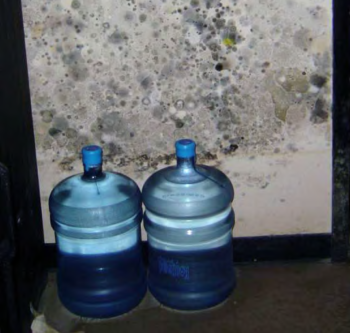Don’t buy a home without a Mold test
Health effects of Mold when buying a home
Mold can effect your health and some health effects are commonly allergy related. Everyone responds differently to mold. The highest risk populations to mold exposure include pregnant women, children and infants, the elderly, people who are already sick or have existing health conditions and those who have respiratory conditions like asthma.
Are there regulations or standards regarding Mold testing?
Standards or Threshold Limit Values (TLVs) for airborne concentrations of mold, or mold spores, have not been set. Currently, there are no regulations or standards for airborne mold contaminants.
Conditions contributing to Mold growth
Any home may develop moisture and dampness problems from roof and window leaks, poor ventilation, high indoor humidity, bathroom exhaust fans venting into attic spaces, warm conditioned air escaping into the attics, and flooding events, among other things. This can lead to the growth of Mold in the home. Molds are fungi that grow on the surfaces of objects and in building materials such as framing, and drywall. Molds can cause odor problems, and significantly deteriorate building materials.
Mold Screening
A Mold screening consists of a visual examination of the home to identify visible Mold contamination along with a collection of samples (air samples or surface samples) to identify the presence of molds that can or can not be seen.
- Visual examination is the most important step in identifying possible Mold contamination. It’s purpose is to identify visual Mold contamination or conditions that may be conducive to microbial growth, for example, musty odor and/or evidence of water penetration at the interior of the home.
- Sampling for Mold can be done to help evaluate a source of Mold contamination. For example, testing for the types of Mold and Mold concentrations indoors versus outdoors can be used to identify an indoor source of Mold contamination that might not be obvious on visual examination. Types of samples used to assess the presence of Mold include air samples and surface samples. The inspector can not determine the extent or type of Mold from visual examination alone. Samples must be collected before the presence or absence of Mold can be determined. After samples are collected, they are sent to an accredited laboratory where they are analyzed for the presence of fungal growth or Mold. The laboratory will then issue a report detailing the presence and type of Mold, if any, found in the samples. The results of mold testing are summarized in an easy to read report that you can act on if a problem exists.

Mold Questions – Mold Removal
If you need follow up answers to your mold related questions, test results or if mold removal is necessary, we recommend you contact an experienced mold remediation company. We recommend DC Eager Emergency Services.

Guaranteed
We offer an exclusive MOLD SAFE guarantee with our mold testing services. If you have mold testing done with our company and the results are good, and you later see mold, Residential Warranty Services will pay to remove all visible mold. Terms and conditions apply to this Guarantee and can be obtained by calling our office.

So, when does Mold become a problem? When there is too much of it, if it causes health problems, or when it causes damage to property.
Accurate Home & Termite Inspections
(717) 583-2914
151 W. Chocolate Ave, Ste 145, #31, Hershey, PA 17033
AccurateInspecting.com
Serving Central Pennsylvania and these surrounding cities:
Harrisburg, Hershey, Hummelstown, Middletown, Annville, Lebanon, Palmyra, Lancaster, Lititz, Manheim, Elizabethtown, Mt Joy, Camp Hill, Mechanicsburg, New Cumberland, York
